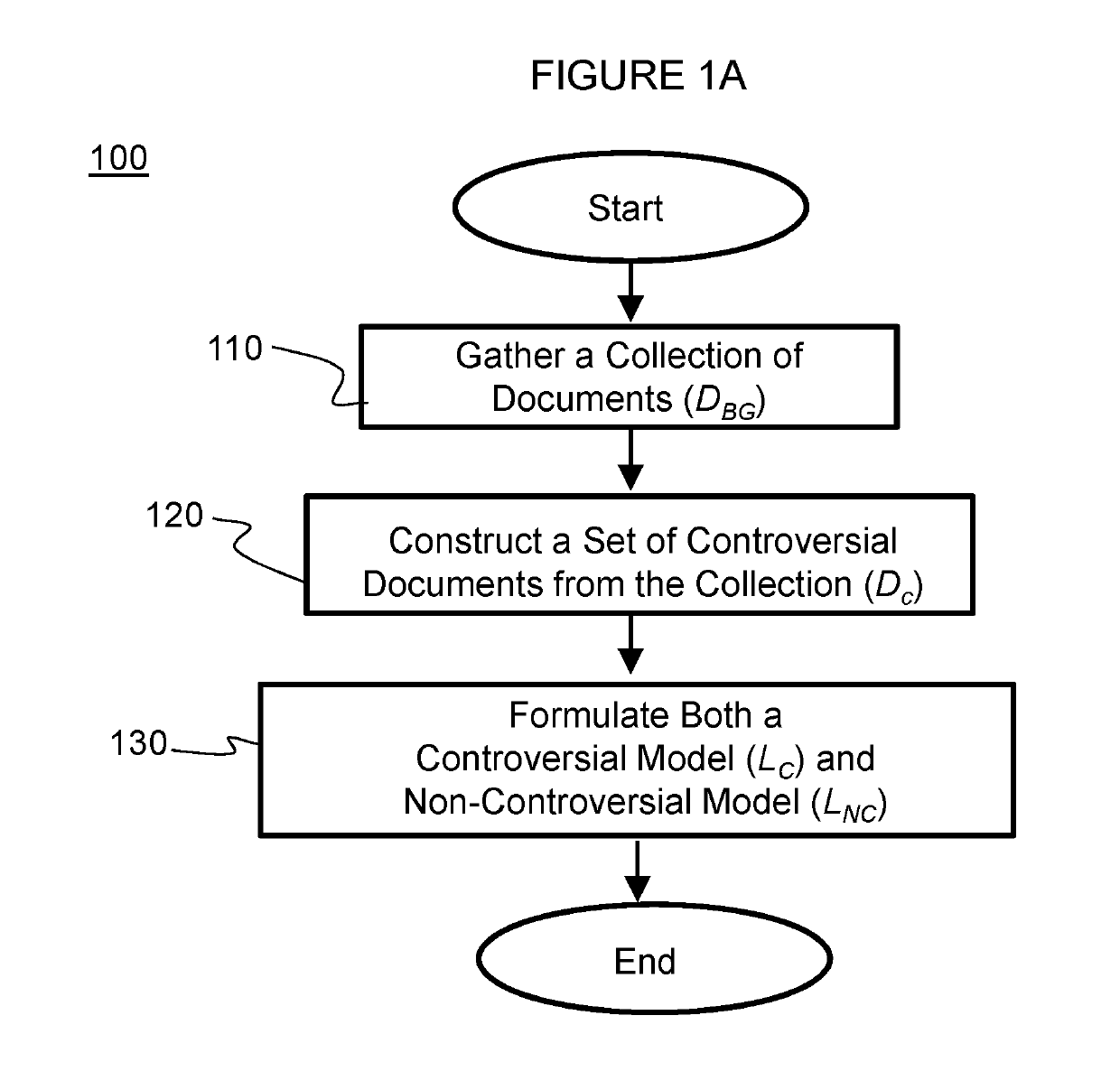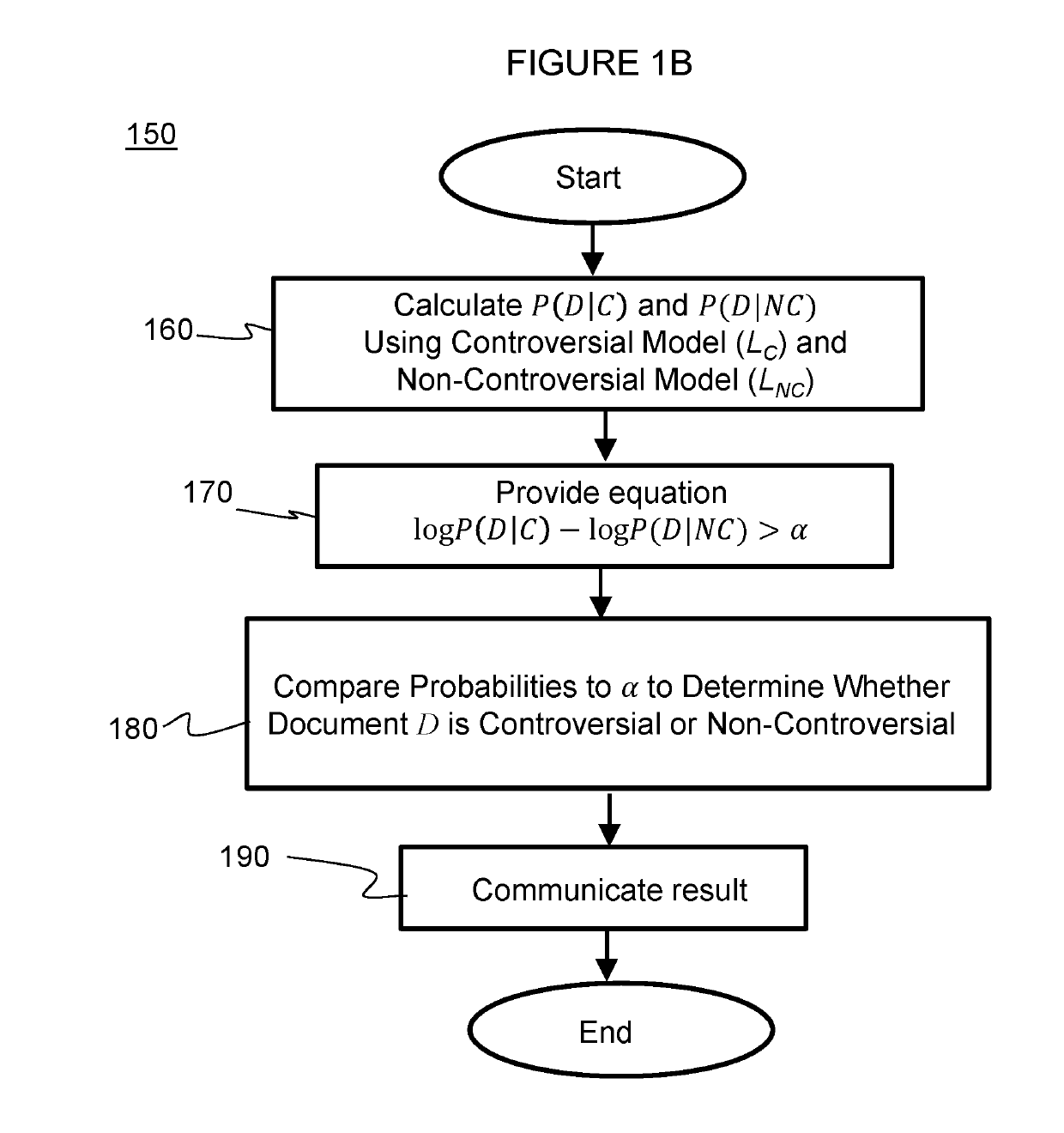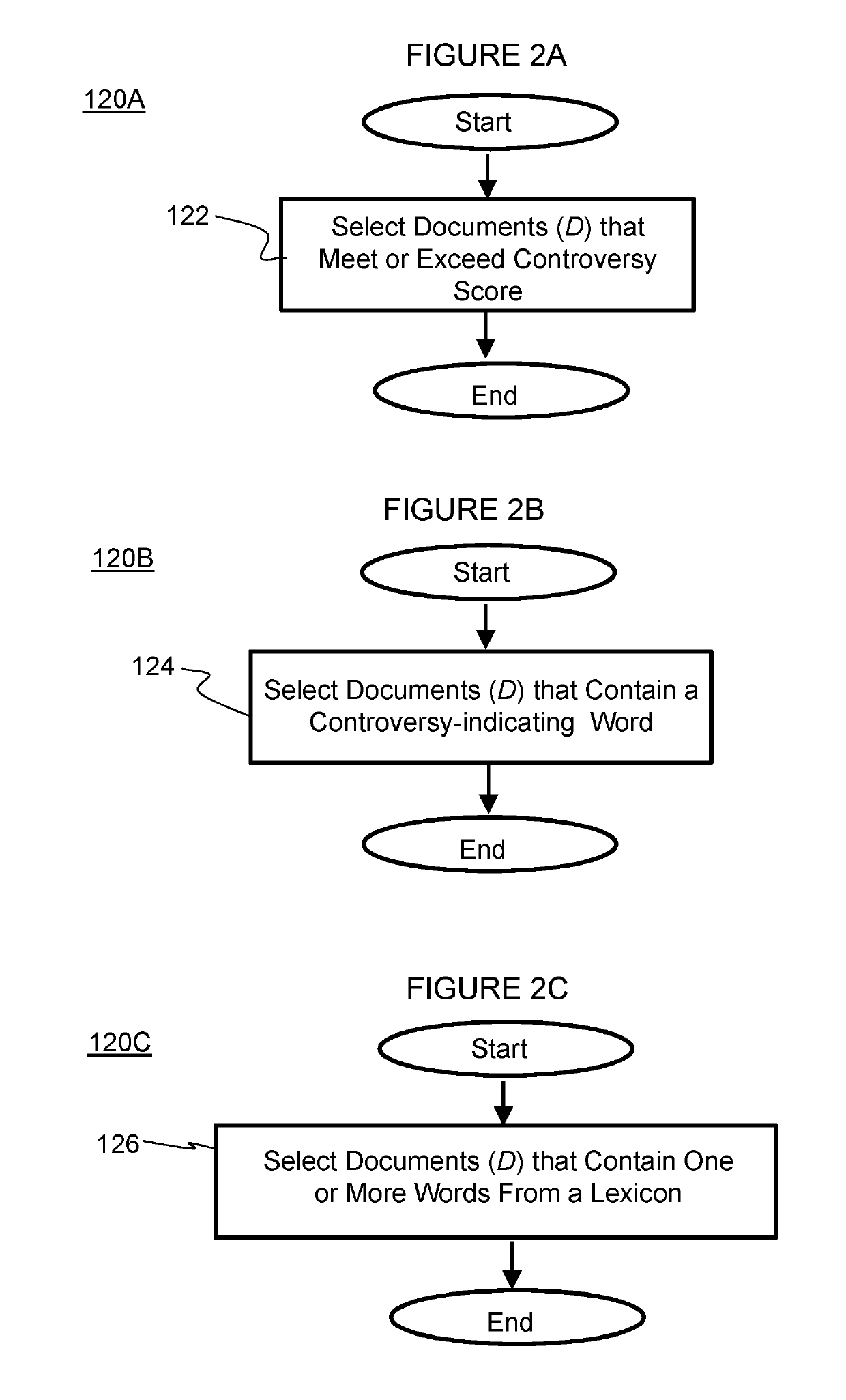Methods for automated controversy detection of content
a technology of content detection and controversy detection, applied in the field of automatic detection of content, can solve the problems of limiting the scope of topics covered in a particular content source, not all users may be aware of the controversy, and the existing work cannot be easily generalized to controversy detection on arbitrary webpages, etc., to achieve excellent sources and balanced and critical views
- Summary
- Abstract
- Description
- Claims
- Application Information
AI Technical Summary
Benefits of technology
Problems solved by technology
Method used
Image
Examples
Embodiment Construction
[0034]The invention widens the scope of controversy detection to the entire WWW by providing a generalization of the kNN-WD algorithm to a probabilistic framework and departing from it to present a new language model to address the controversy detection problem. Specifically, a probabilistic model for ranking is provided by formulating the controversy detection problem with a probabilistic perspective and recasting the kNN-WC algorithm as obtaining a probability of controversy for binary classification. The kNN-WC algorithm is then extended for binary classification and the kNN-WC model derived. This model is a probabilistic model that can be used for ranking.
[0035]FIG. 1A illustrates a flow chart of a method for constructing language models according to the invention. As shown in FIG. 1A, the method 100 gathers a collection of documents (DBG) from a content source at step 110. At step 120, a set of controversial documents from the collection (Dc) is constructed. The various ways in...
PUM
 Login to View More
Login to View More Abstract
Description
Claims
Application Information
 Login to View More
Login to View More - R&D
- Intellectual Property
- Life Sciences
- Materials
- Tech Scout
- Unparalleled Data Quality
- Higher Quality Content
- 60% Fewer Hallucinations
Browse by: Latest US Patents, China's latest patents, Technical Efficacy Thesaurus, Application Domain, Technology Topic, Popular Technical Reports.
© 2025 PatSnap. All rights reserved.Legal|Privacy policy|Modern Slavery Act Transparency Statement|Sitemap|About US| Contact US: help@patsnap.com



